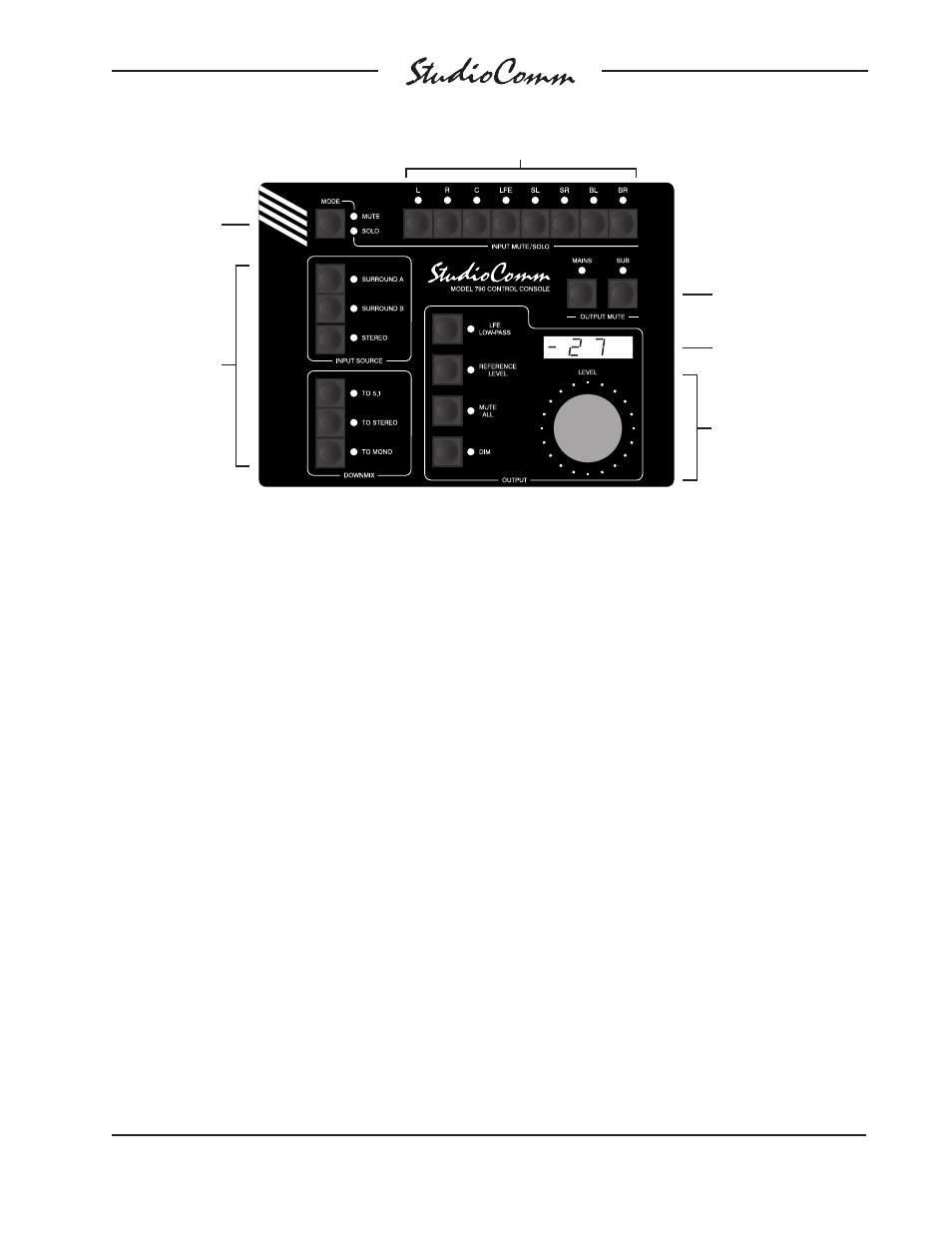Additional details – Studio Technologies 780-03 V.4.15 User Manual
Page 7

Model 780-03/790 User Guide
Issue 1, April 2015
Studio Technologies, Inc.
Page 7
for Surround
Figure 3. Model 790 Control Console Front Panel
Channel mute/solo
Mute/solo
mode
Post-fader surround
monitor output
• Surround/stereo
• Reference level
• Mute all
• Dim
• Rotary level control
Monitor output
level display
Input source
select
Downmix
Great care was taken in designing the
system’s architecture, ensuring that the
character of the audio input signals was
preserved. All audio processing, including
bass management, is performed in 32-bit
logic using a high-speed field-program-
mable gate array (FPGA) integrated circuit.
High-performance integrated circuits are
used to perform input, output, and clocking
tasks.
The Model 780-03 occupies one space
(1U) in a standard 19-inch rack. Digital
audio sources are interfaced with the
Model 780-03 using one 25-pin female
D-subminiature connector and one 3-pin
female XLR connector. A BNC connector
is used to interface with an external sync
source. Digital and analog monitor output
signal connections are made using two
25-pin female D-subminiature connector.
One 9-pin female D-subminiature connector
is used to connect the Model 780-03 with
a maximum of four Model 790 or Model 71
Control Consoles. A second 9-pin “D-sub”
connector is used to interface with remote
control signals. AC mains power is con-
nected directly to the Model 780-03, with an
acceptable range of 100 to 240 V, 50/60 Hz.
Additional Details
The Model 790 provides three buttons and
associated LEDs for selection of the source
to be monitored. The choices are the two
surround inputs and the stereo input; only
one source can be monitored at a time. It’s
interesting to note that while the surround
inputs have an LFE channel associated
with them, the corresponding post-fader
digital and analog monitor output channels
are designated as subwoofer (SUB), rather
than LFE. This terminology was selected
to highlight the fact that this output channel
may include more than just LFE content.
The bass management function, if enabled,
will redirect low-frequency energy from the
main channels, combine it with the contents
from the LFE input channel, and route the
combination to the subwoofer (SUB) chan-
nels of the post-fader digital and analog
monitor outputs.
